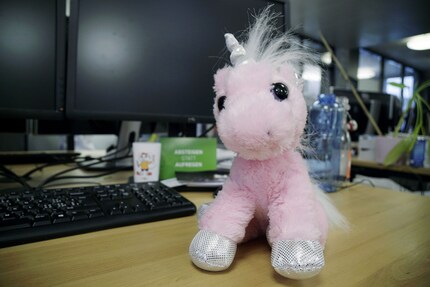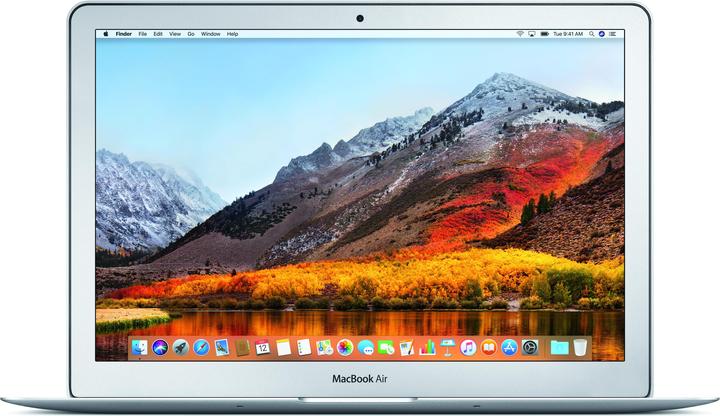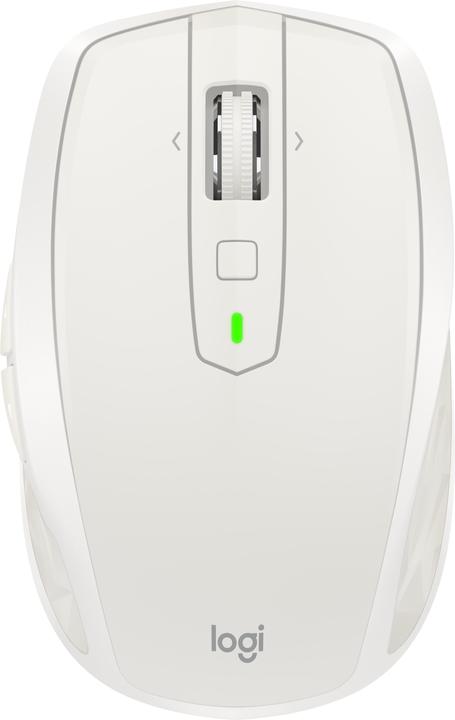
Logitech Flow: The clipboard in the WLAN (and a competition)
Logitech has integrated the Flow app into its latest generation of mice and keyboards. This enables data exchange between computers. Not only between PC and PC, but also between PC and Mac and vice versa. How well does it work? I'm testing. And: we have mice that we would like to give away.
"Hey, the mouse can move data between PC and Mac," Marketing Manager Sebastian Karlen tells me. The man from Valais is delighted. As someone from St. Gallen, I'm sceptical. Is that possible? If so, how? We discuss it back and forth and in the end we come to a decision: We'll test it.
So I set up a small test environment. The Flow app is needed.
- A mouse with the feature built in
- Network access
- Two computers connected to the same network and with "Logitech Options" installed
Optionally, you can also integrate a keyboard that can also flow into the setup.
In the end, with a bit of cable clutter, I had the following setup.
From the MK850, I only stole the keyboard from a table in the office. The mouse was somewhere else and I also found the two laptops somewhere. The HTC U11 is my current test device, from which I set up a WiFi hotspot. In other words: lots of random stuff that somehow never worked together.
Why WiFi?
I rarely read through the technical documentation of a new feature before unpacking a test device. This time, however, my curiosity was too great: How does the Flow app work? Because if Logitech manages to create an application that bridges the gap between Apple's and Microsoft's operating systems, then they really have achieved a great feat.
Before testing, I know that the Flow app does "something with Wi-Fi", i.e. it probably transports data via Wi-Fi. Then I come across a note in the documentation that if the Flow app doesn't work, the user should please consult their system administrator so that they can open up the relevant ports.
Whoa, what?
A company administrator should simply release a few ports so that a non-system-critical app can mess around? I don't think that makes much sense. Anyone could come along. Sure, it's easy to release ports in a network, but the justification is poor.
I also wonder why Bluetooth was not chosen as the transfer method. Because the mouse is paired via Bluetooth with the two devices between which you can move data. Optionally, a third device can be integrated, but at least two are included. Otherwise data transfer makes no sense. So if the device would send data via Bluetooth, then we could forget about port sharing. After all, how often do you want to move data from one machine directly to the other and continue working there seamlessly if the devices are not close to each other?
Well, let's get to work.
Copy paste only, no drag'n'drop
Installing the Flow app via "Logitech Options" is easy. Both laptops recognise that there is a mouse that comes with Flow and make the option available. I still have to activate the function separately. I like it when a new feature is opt-in and not opt-out, so I still have to activate it manually. From a security point of view, this makes sense because it means I have to think about the new function.
It turns out that the Flow app is heavily dependent on the mouse. A Flow keyboard alone is useless. Because the mouse, or rather the position of the pointer, determines which computer I am currently working on. "Logitech Options" seems to monitor the position of the mouse on screen A and if I move with some momentum against the edge closest to screen B, the cursor jumps from screen A to screen B.
This works. It's not completely seamless, because sometimes the cursor takes about half a second to jump. However, this may also be due to the fact that I have to "smash" the pointer to the edge of the screen with the mouse to make it jump. So if I'm below a minimum speed, then I just get to the edge of the screen.
Two minutes later at most, I've got used to it.
Time to move data. This is where it gets exciting, because if you've ever tried to move data from PC to Mac, then you've probably run into the issue of hard drive formats. Mac is formatted differently to Windows and USB sticks are not flexible enough to take this into account. That's why the issue of moving data across OS boundaries is exciting.
However, Logitech has found a clever solution, even if I was upset at first. Because drag'n'drop doesn't work at all. So I have a picture of a plush horn that I want to move for demo purposes. If I want to move it from the Windows desktop to the Mac desktop using drag'n'drop, I can move it around the edge of the screen for a long time. It doesn't work.
Testing with Copypaste reveals how the Flow app works. (Because the documentation is somewhat silent on this.) Logitech has probably taken a leaf out of Apple's book, because the Cupertino-based company is also one of those companies that simply rattle off functions without providing any broad technical background.

So I copy the unicorn image, jump to the other screen with the mouse and paste the image on the Mac via right-click → Paste on the desktop. That works. I briefly see how the image, named irene_einhorn_logitech_flow.jpg in the Windows original, is given a file name suffix of probably random characters and then renamed back to the original name.
From this I can deduce how the Flow app works. And it works like this:
- The Flow app reads the clipboard on the Windows computer
- The clipboard is transferred to the Mac via WiFi
- The Flow app on the Mac copies the data to the Mac's clipboard
Voilà, I can paste as I please.
This is actually frighteningly simple, because when it comes to temporary data storage, there is hardly any storage that is easier to access than the clipboard. It works across application and service boundaries, has very few restrictions at system level and every programme can work with the clipboard in some way. Logitech doesn't have to invent anything new here, but can simply override system boundaries with a really clever idea.
The keyboard also works very cleverly. The keyboard is paired with the mouse via software after it has been paired with both computers via Bluetooth. Then "Logitech Options" reads out where the mouse pointer is located and the keyboard writes to the computer on which the mouse is currently located.
However, the thing isn't really great. It's obvious that although the system works, it's only at the beginning of its development. Drag'n'drop would be a minimum requirement for seamless data exchange. But that's just a question of software, not hardware, if I understand the mechanisms of the Flow app correctly.
So what can I say: Sebastian is right. It does work. It's clever and new. And the MX Master is the mouse I use on all my PCs anyway. And if you don't like the colour white, you can have the mouse in one of three colours.
Want one of the mice? Here's your chance to win!
Sebastian spoke to Logitech and got hold of a few samples. We're giving them away to you. But we're not just giving them away for free, you have to complete a tough task.
Take a film quote and rewrite it in a comment so that it's about computer mice and is also funny to read.
You could win:
- 3x1 Logitech MX Anywhere 2S (one per colour)
- 3x1 Logitech MX Master 2S (one per colour)
Please specify in the comment which mouse and which colour you would like to have. We can't promise that you'll get your mouse and colour, but we'll certainly try.
The closing date for entries is 17 July 2017, when we will evaluate and notify the winners.
Have fun!
You might also be interested in this
Journalist. Author. Hacker. A storyteller searching for boundaries, secrets and taboos – putting the world to paper. Not because I can but because I can’t not.








